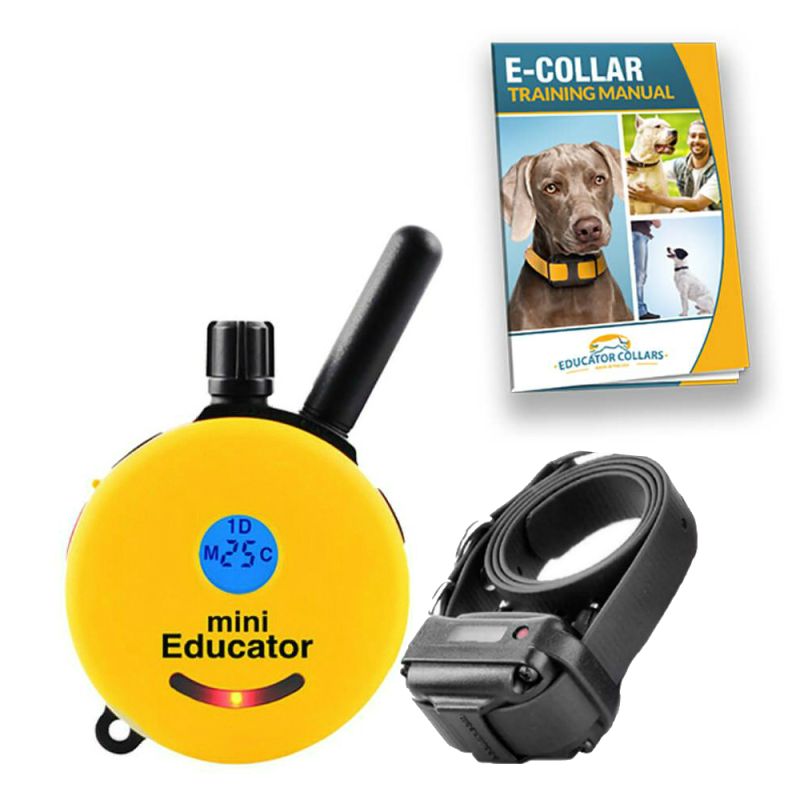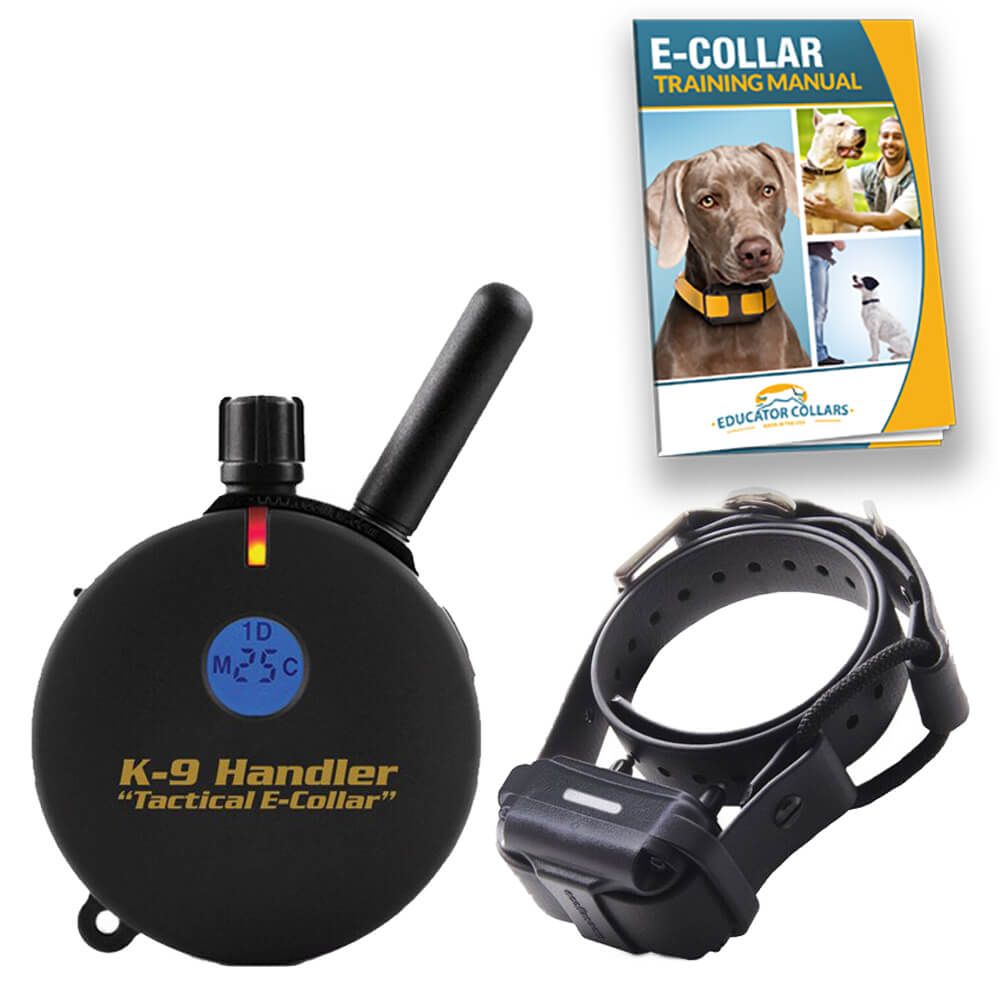
In the realm of dog training, a unique and often misunderstood method stands out: e-collar dog training. Utilizing an electronic collar that emits a mild stimulation, ranging from beeps and vibrations to static shocks, e-collar training aims to correct unwanted behaviors and enhance communication between dog and owner. While the concept may raise concerns, this comprehensive guide delves into the potential benefits, essential techniques, and ethical considerations of e-collar dog training, empowering you to make informed decisions for your canine companion.
Understanding E-Collar Dog Training: A Beginner’s Guide
Before embarking on the journey of e-collar dog training, it’s crucial to grasp the fundamentals of this method. An e-collar dog training system typically comprises three components: a transmitter, a receiver collar, and contact points. The transmitter, held by the owner, serves as the control device, sending signals to the receiver collar worn by the dog. The contact points, attached to the collar, transmit the stimulation to the dog’s skin.
E-collars offer a range of stimulation options, including beeps, vibrations, and static shocks. Beeps and vibrations act as mild warnings, while static shocks, the most intense form of stimulation, should be used sparingly and only as a last resort. Proper collar fitting is paramount to ensure the dog’s comfort and safety. The contact points should make firm contact with the skin without causing discomfort.
Benefits of E-Collar Dog Training: Enhancing Your Canine Companion
E-collar dog training, when employed responsibly and ethically, holds the potential to transform your dog’s behavior and strengthen your bond. Improved obedience is a significant advantage, as e-collars can effectively teach dogs basic commands, such as “sit,” “stay,” and “come,” even at a distance. This enhanced control can be particularly beneficial in off-leash situations, ensuring your dog’s safety and preventing potential hazards.
E-collars can also prove valuable in addressing behavioral issues that may strain the relationship between dog and owner. Excessive barking, jumping, and leash pulling, common behavioral challenges, can be effectively curbed through e-collar training. By providing a clear and consistent cue, e-collars help dogs understand and follow desired behaviors.
Furthermore, e-collars can enhance communication between dog and owner. With the ability to deliver clear and immediate feedback, e-collars eliminate the confusion that can arise from verbal cues alone. This improved communication can strengthen the bond between dog and owner, fostering a relationship based on mutual trust and respect.
Essential E-Collar Dog Training Techniques
Effective e-collar dog training hinges on a few fundamental principles: positive reinforcement, timing, consistency, and patience. Positive reinforcement is the cornerstone of successful training. Rewarding desired behaviors with praise, treats, or playtime reinforces positive associations and encourages repetition.
Timing is crucial in e-collar training. The stimulation should be delivered immediately after the unwanted behavior to establish a clear connection between the action and the consequence. This allows the dog to understand the cause-and-effect relationship and make the necessary adjustments.
Consistency is essential for effective e-collar training. The use of the e-collar should be consistent and fair to avoid confusing the dog. Establishing clear rules and expectations and applying them consistently will help the dog learn and retain the desired behaviors.
Patience is a virtue in e-collar dog training. Achieving lasting results requires dedication and time. Avoid rushing the process; allow the dog to learn at its own pace, providing plenty of opportunities for practice and reinforcement.
Effective E-Collar Dog Training Exercises
Practical e-collar dog training exercises can address common behavioral issues and enhance overall obedience. Teaching “sit” is a fundamental skill. With the dog standing, hold a treat above its nose, guiding its head upwards until its rear end lowers to the ground. Simultaneously say “sit.” Upon successful sitting, reward the dog with the treat.
Encouraging “stay” requires patience and consistency. With the dog in a sitting position, say “stay” and step back a few paces. If the dog remains in place, reward it with praise or a treat. Gradually increase the distance as the dog masters the command.
Recalling the dog is essential for safety and control. With the dog at a distance, say “come” while issuing a brief stimulation. When the dog approaches, reward it enthusiastically. Repeat the exercise, gradually increasing the distance.
Addressing excessive barking requires timing and consistency. When the dog barks excessively, issue a brief stimulation followed immediately by a command like “quiet.” Upon compliance, reward the dog with praise or a treat.
Tips for Successful E-Collar Dog Training
Maximizing the effectiveness of e-collar dog training requires careful consideration and practical strategies:
- Seek professional guidance: Consult a certified dog trainer or behaviorist for personalized training plans and support. Their expertise can help you avoid common pitfalls and ensure the training is tailored to your dog’s specific needs and temperament.
-
Start slowly: Begin with the lowest level of stimulation possible and gradually increase only if necessary. Observe your dog’s reaction closely and adjust accordingly. Discomfort or anxiety are signs to decrease the intensity.
-
Avoid over-reliance: E-collars are a training tool, not a crutch. The ultimate goal is for your dog to understand and follow commands without relying solely on stimulation. Utilize positive reinforcement and verbal cues alongside the e-collar for well-rounded training.
-
Prioritize safety: Ensure the collar fits properly and avoid leaving it on the dog for extended periods to prevent skin irritation. Monitor your dog’s reaction to stimulation and discontinue use if you notice any signs of distress.
Beyond E-Collars: A Holistic Approach to Dog Training
While e-collar dog training can be a valuable tool, it should be part of a comprehensive approach to dog training that prioritizes the well-being and overall development of your canine companion. Socialization is crucial for a well-adjusted dog. Expose your dog to different people, animals, and environments from a young age to promote social skills and prevent fear-based behaviors.
Regular exercise is vital for both physical and mental health. Provide your dog with ample opportunities to release energy through walks, playtime, and mental stimulation. Puzzle toys and interactive games can help engage your dog’s mind and prevent boredom-related behaviors.
Veterinary care plays a fundamental role in your dog’s well-being. Underlying medical conditions can sometimes contribute to behavioral issues. Schedule regular checkups with your veterinarian and address any health concerns that may be influencing your dog’s behavior.

Addressing Concerns and Ethical Considerations
E-collar dog training is not without its critics, and addressing concerns is essential. Improper use of e-collars can cause pain, anxiety, and fear in dogs, potentially damaging the bond between dog and owner. It’s crucial to prioritize alternative training methods, such as positive reinforcement and behavior modification, whenever possible.
E-collars should only be used under the guidance of a qualified professional who can ensure their safe and ethical application. Consulting a certified dog trainer or behaviorist can equip you with the knowledge and skills to use e-collars responsibly and effectively.
Conclusion
E-collar dog training, when used responsibly and ethically, can be a valuable tool for enhancing your dog’s obedience, addressing behavioral issues, and strengthening the bond you share. However, it’s crucial to remember that e-collars are just one piece of the puzzle. A holistic approach that emphasizes positive reinforcement, socialization, exercise, and veterinary care is essential for a well-adjusted and happy dog.
By carefully considering the benefits, techniques, and ethical considerations outlined in this comprehensive guide, you can make informed decisions about whether e-collar dog training is right for you and your furry companion. Remember, the ultimate goal is to create a harmonious relationship with your dog, built on mutual trust, respect, and effective communication.
-